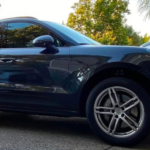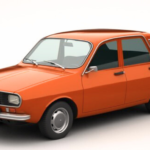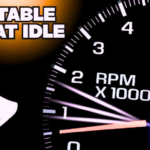Yamaha RX 100

The Yamaha RX 100 is more than just a motorcycle—it’s a symbol of the 1980s. Known for its powerful two-stroke engine, sleek design, and remarkable performance, yamaha rx 100 bike the Yamaha RX 100 has earned its place as one of the most iconic motorcycles, especially in India.
Though it was discontinued over 20 years ago, the RX 100 still commands respect and admiration. In this blog post, we’ll explore the history, features, and lasting impact of the Yamaha RX 100, as well as why it continues to capture the imagination of motorcycle enthusiasts.
The Genesis of the Yamaha RX 100
Introduced in 1985, the Yamaha RX 100 became an instant classic. At the time, India’s motorcycle market was largely ruled by brands like Bajaj and Hero Honda, but Yamaha aimed to set itself apart by offering a machine that was both high-performance and stylish.
The RX 100 was born from this vision—a motorcycle that provided not just daily usability, but also thrilling performance that resonated with a younger, performance-hungry audience.
The RX 100 was powered by a 98cc, two-stroke engine, which made it stand out in an era dominated by more utilitarian motorcycles. It combined great speed with a lightweight structure, making it a perfect choice for daily commutes and spirited rides alike.
Yamaha marketed the RX 100 as an affordable, performance-oriented bike, a perfect blend of speed, style, and economy for the Indian market.
Design and Craftsmanship
The RX 100’s design focused on simplicity, practicality, and performance. Its lightweight, compact frame made it easy to handle and maneuver, even in congested urban environments. With sharp, aggressive lines, the bike’s styling was distinct and sporty, offering a look that was both modern and functional.
Size and Comfort
One of the RX 100’s most praised qualities was its low weight—approximately 98 kg—making it exceptionally easy to control, especially for new riders. The bike’s ergonomics were designed for riders of average height, with a seat height of about 775mm. The compact size and sporty design made the RX 100 an agile motorcycle, capable of navigating tight spots with ease.
Fuel Tank and Styling
The RX 100 featured a slim and sculpted fuel tank, designed for both aesthetic appeal and functionality. With a capacity of 10 liters, it ensured that riders could travel long distances without frequent fuel stops, even with the two-stroke engine’s relatively higher fuel consumption.
The tank’s sleek design, combined with the bike’s overall sporty and aggressive stance, made the RX 100 one of the most visually striking motorcycles of its era.
Engine and Performance
The Yamaha RX 100’s engine was one of its key highlights, setting the bike apart from its competition. It was powered by a 98cc, air-cooled, two-stroke engine that generated around 11 horsepower. Although the engine size may seem modest by today’s standards, the performance it delivered was exhilarating, especially for a bike of its size.
The Two-Stroke Advantage
The RX 100 featured a two-stroke engine, which made it a standout in an era dominated by four-stroke machines. Unlike four-stroke engines that deliver power every other revolution of the crankshaft, two-stroke engines provide power on every revolution, making them capable of delivering quick acceleration and a unique sound.
This engine setup gave the RX 100 its signature, high-revving, buzzy exhaust note that became synonymous with the bike.
Performance and Top Speed
Thanks to its lightweight frame and two-stroke engine, the RX 100 could reach speeds of up to 100 km/h (62 mph), which was fast for its class at the time. The bike’s engine was responsive and quick to rev, offering smooth acceleration and a thrilling riding experience, whether you were commuting in the city or cruising on highways.
This performance, combined with its iconic engine sound, made the RX 100 a standout in terms of both speed and character.
Riding Experience
The Yamaha RX 100 was designed for riders seeking a balance between daily usability and high-performance thrills. Despite its sporty engine, it was still a highly practical motorcycle, making it ideal for both commuting and leisurely rides.
Its light weight and agile handling allowed riders to zip through traffic with ease, making it a highly enjoyable ride for city commutes.
Suspension and Handling
The RX 100 was equipped with front telescopic forks and twin shock absorbers at the rear, which offered a smooth ride even on uneven surfaces. The bike’s handling was one of its strongest points.
Thanks to its light weight and responsive steering, the RX 100 could effortlessly navigate corners and tight spaces, making it a nimble performer on both city streets and winding roads.
Fuel Efficiency
Despite its performance focus, the RX 100 still maintained good fuel efficiency. The two-stroke engine, which required a mix of oil and petrol, delivered an average fuel consumption of about 30-35 km per liter.
This made it a great choice for riders who wanted both performance and economy, especially in a market where fuel efficiency was a critical factor in decision-making.
The Enduring Legacy of the Yamaha RX 100
Although Yamaha ceased production of the RX 100 in 1996, its impact on the Indian motorcycle scene is undeniable. The RX 100 helped establish Yamaha as a brand known for performance and reliability in India, and it inspired future generations of motorcycles, including the RX 135 and the FZ series. Even today, the RX 100’s reputation for speed, durability, and iconic design keeps it alive in the hearts of motorcycle fans.
Cult Following and Restoration
In recent years, the RX 100 has gained a cult following. Classic motorcycle enthusiasts, particularly in India, seek out well-maintained or restored RX 100s, with some even embarking on restoration projects to bring the bikes back to their original glory. These vintage motorcycles are a common sight at motorcycle meets and exhibitions, and their presence is a testament to the bike’s lasting popularity.
RX 100 in the Modern Era
Though the Indian motorcycle market has evolved, the RX 100’s charm remains intact. With modern motorcycles now offering superior fuel efficiency and advanced technology, the RX 100 still captivates riders with its raw performance, engaging riding experience, and distinct sound. Whether you’ve owned one in the past or dream of riding one, the RX 100 continues to offer a unique, nostalgic experience for motorcyclists everywhere.
Conclusion
The Yamaha RX 100 was more than just a motorcycle—it was a revolutionary machine that changed the landscape of the Indian two-wheeler market. With its unique combination of speed, agility, and design, it became an instant classic.
Though time has passed, the RX 100 remains a cherished part of motorcycling history, and its legacy continues to inspire collectors, riders, and motorcycle enthusiasts worldwide.
Even though the Yamaha RX 100 is no longer in production, its influence can still be seen in modern motorcycles. The distinct exhaust note, the lightweight build, and the exhilarating performance are still the benchmarks that make the.
RX 100 a legend. For anyone who’s ever ridden or even dreamed of riding this iconic motorcycle, the RX 100 remains a timeless reminder of the joy and freedom that only a motorcycle can provide.








